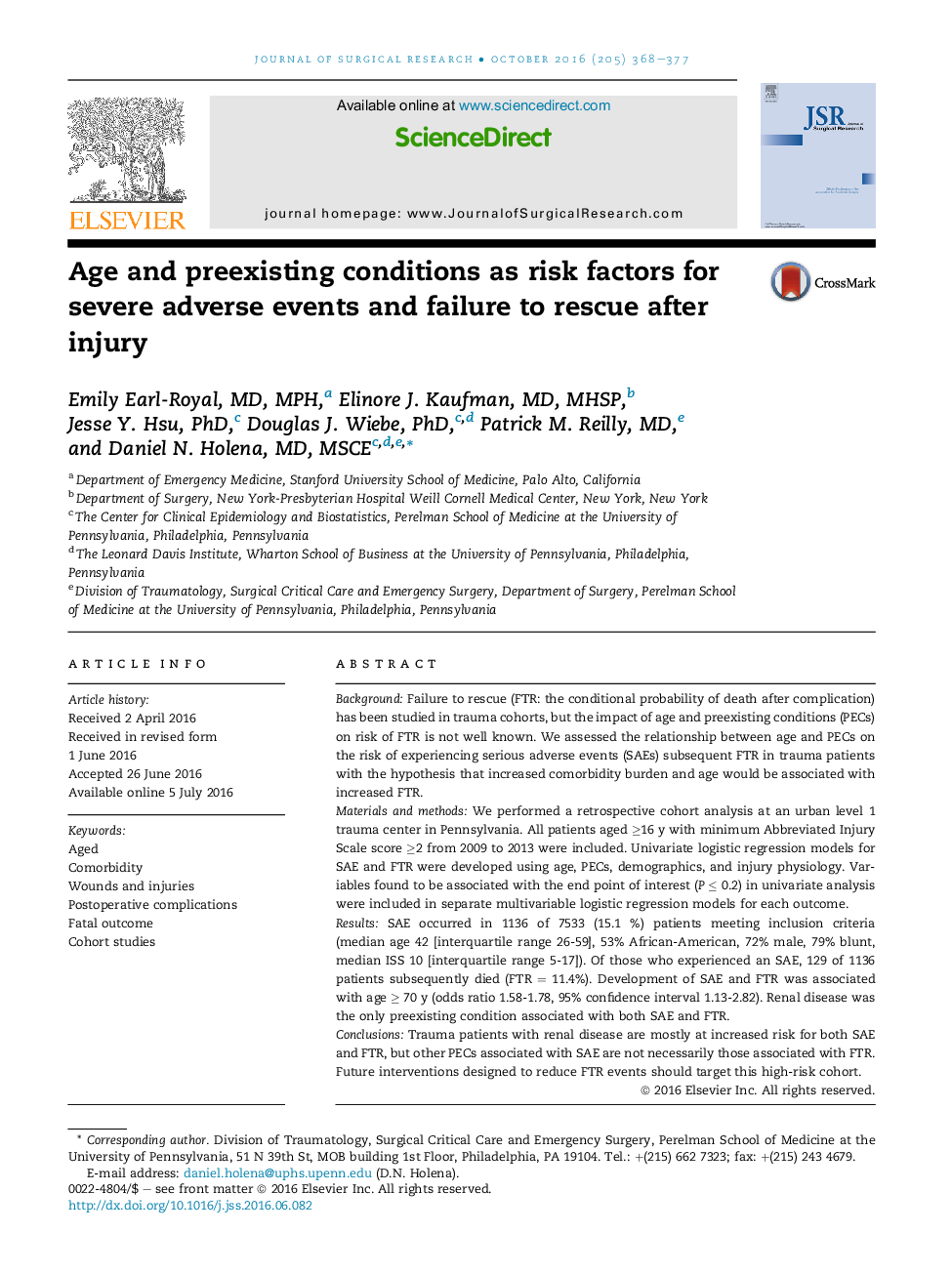| Article ID | Journal | Published Year | Pages | File Type |
|---|---|---|---|---|
| 4299050 | Journal of Surgical Research | 2016 | 10 Pages |
BackgroundFailure to rescue (FTR: the conditional probability of death after complication) has been studied in trauma cohorts, but the impact of age and preexisting conditions (PECs) on risk of FTR is not well known. We assessed the relationship between age and PECs on the risk of experiencing serious adverse events (SAEs) subsequent FTR in trauma patients with the hypothesis that increased comorbidity burden and age would be associated with increased FTR.Materials and methodsWe performed a retrospective cohort analysis at an urban level 1 trauma center in Pennsylvania. All patients aged ≥16 y with minimum Abbreviated Injury Scale score ≥2 from 2009 to 2013 were included. Univariate logistic regression models for SAE and FTR were developed using age, PECs, demographics, and injury physiology. Variables found to be associated with the end point of interest (P ≤ 0.2) in univariate analysis were included in separate multivariable logistic regression models for each outcome.ResultsSAE occurred in 1136 of 7533 (15.1 %) patients meeting inclusion criteria (median age 42 [interquartile range 26-59], 53% African-American, 72% male, 79% blunt, median ISS 10 [interquartile range 5-17]). Of those who experienced an SAE, 129 of 1136 patients subsequently died (FTR = 11.4%). Development of SAE and FTR was associated with age ≥ 70 y (odds ratio 1.58-1.78, 95% confidence interval 1.13-2.82). Renal disease was the only preexisting condition associated with both SAE and FTR.ConclusionsTrauma patients with renal disease are mostly at increased risk for both SAE and FTR, but other PECs associated with SAE are not necessarily those associated with FTR. Future interventions designed to reduce FTR events should target this high-risk cohort.
